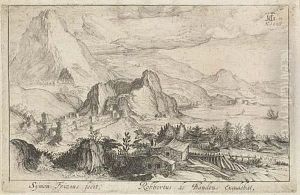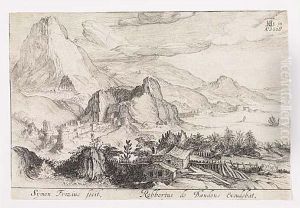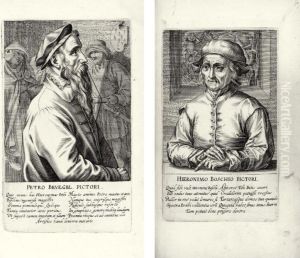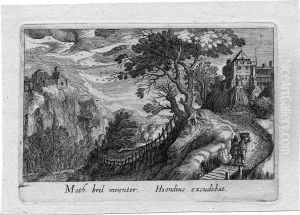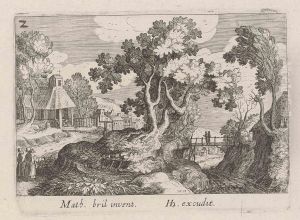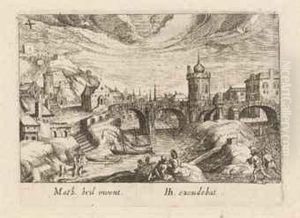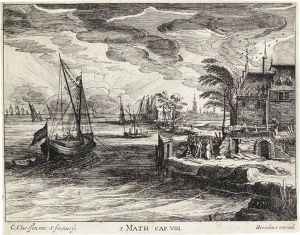Simon Wynouts Frisius Paintings
Simon Wynouts Frisius, born in 1580 in Harlingen, Friesland (now part of the Netherlands), was a notable Dutch engraver and etcher, remembered primarily for his influential contributions to the art of printmaking during the late 16th and early 17th centuries. His work is characterized by its intricate detail, dynamic compositions, and a strong narrative element, qualities that made his prints highly sought after by the collectors of his time and that continue to be appreciated today.
Frisius began his artistic career in the Netherlands but, like many of his contemporaries, traveled extensively throughout Europe to refine his skills and gain inspiration. He spent significant time in Paris and Rome, where he was exposed to the works of the Italian masters and the emerging Baroque style, which would have a lasting impact on his artistic development. It was during this period that Frisius began to experiment with various engraving techniques, eventually mastering the art of etching, a method that allowed for greater detail and subtlety in his prints.
Upon returning to the Netherlands, Frisius established himself as a prominent figure in the Dutch art scene, contributing to the burgeoning print culture of the early 17th century. He was particularly renowned for his landscapes and seascapes, as well as his portraits and religious scenes. Notably, Frisius was among the first in the Netherlands to adopt and popularize the technique of etching, paving the way for future generations of Dutch printmakers, including Rembrandt van Rijn.
Frisius's work was not limited to original compositions; he also produced a significant number of engravings after paintings by contemporary artists, thereby playing a crucial role in disseminating the works of Dutch and Flemish painters to a wider European audience. His engravings served as a vital means of artistic exchange during a period when direct access to paintings was limited for most people.
Simon Wynouts Frisius passed away in 1629, leaving behind a legacy that has endured through the centuries. His contributions to the development of printmaking techniques and his role in the diffusion of the Dutch and Flemish artistic styles have solidified his place in the history of European art. Today, his prints are preserved in numerous museum collections worldwide, where they continue to be studied and admired for their beauty and technical prowess.
